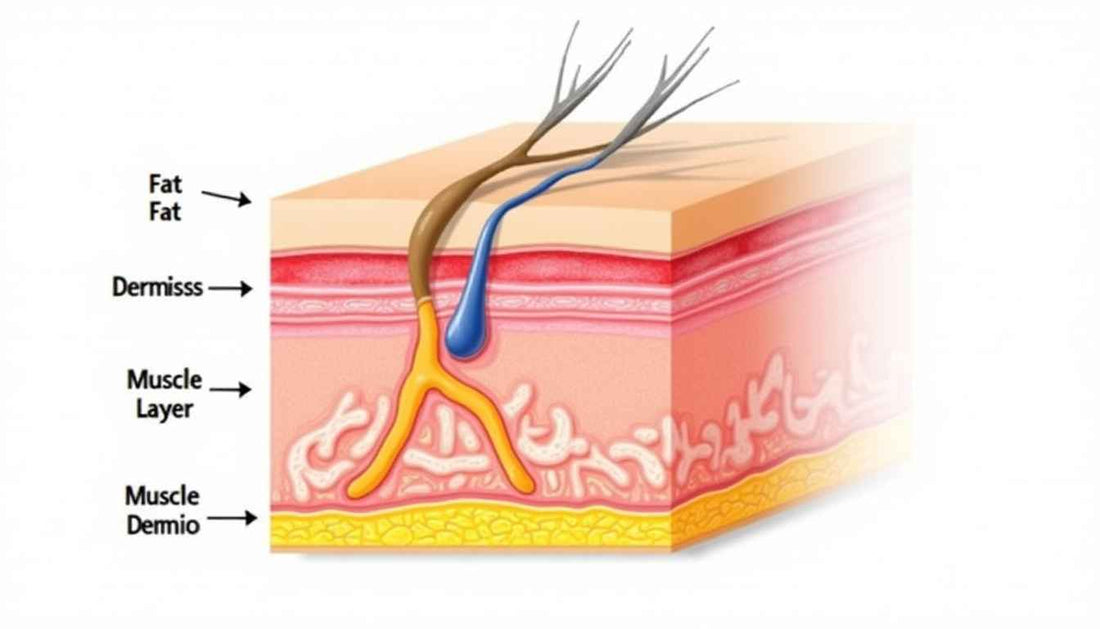
What Is Cellulite? Causes, Types & How to Treat It Naturally
Share
If you've ever wondered, "What is cellulite and why do I have it?"—you’re not alone. Cellulite affects nearly 90% of women and some men, regardless of weight or fitness level. It shows up as lumpy or dimpled skin, often on the thighs, buttocks, and abdomen. But what causes it, and can anything be done to reduce its appearance? In this article, we’ll explain what cellulite is, why it forms, the different types, and what you can do to treat it naturally and effectively.
What Is Cellulite?
Cellulite is a condition where the skin appears dimpled or lumpy due to underlying fat deposits pushing through connective tissue. It’s most commonly found in areas with higher fat storage like thighs, hips, and buttocks.
Featured Snippet Answer:
Cellulite is the dimpled or lumpy appearance of skin caused by fat pushing through fibrous connective tissue beneath the surface, most commonly in the thighs, buttocks, and abdomen.
Why Does Cellulite Form?
There are several reasons why cellulite develops, including:
- Hormonal factors (especially estrogen)
- Genetics (family history)
- Poor circulation
- Aging (loss of skin elasticity)
- Lifestyle factors (diet, hydration, exercise)
Internal Link:
Explore more on the Causes of Cellulite
Types of Cellulite
There are three main types of cellulite:
1. Soft Cellulite
- Appearance: Loose and saggy skin
- Common in sedentary individuals
2. Hard Cellulite
- Appearance: Firm to touch, less visible
- Common in younger, athletic people
3. Edematous Cellulite
- Appearance: Puffy, associated with poor circulation
- Can be painful and more severe
Cellulite Grades (Severity Levels)
Dermatologists classify cellulite into three grades:
- Grade 1: No visible cellulite, even when skin is pinched
- Grade 2: Dimples visible when skin is pinched
- Grade 3: Dimples visible without pinching, even while standing
Who Gets Cellulite?
Cellulite can affect anyone, but it’s more common in:
- Women (due to different fat and connective tissue structure)
- People with hormonal imbalances
- Individuals with a family history of cellulite
- Those with sedentary lifestyles
Is Cellulite a Health Concern?
No, cellulite is not a medical condition or health risk. It’s purely cosmetic, although it can impact self-esteem. Treating cellulite is optional and mostly done for aesthetic reasons.
Natural Treatments for Cellulite
1. Massage Therapy
Improves circulation and lymphatic drainage. Try these Cellulite Massage Techniques
2. Exercise
Strength training and cardio can reduce fat and tone muscles.
3. Dry Brushing
Exfoliates and stimulates blood flow.
4. Hydration & Diet
Drink plenty of water and consume anti-inflammatory foods.
5. Cupping Therapy
Increases blood flow and can reduce the appearance of cellulite. Learn more about the Cupping Therapy Process.
FAQs
What causes cellulite to appear?
Hormones, poor circulation, genetics, and lifestyle factors like diet and exercise can all contribute.
Can you get rid of cellulite completely?
No treatment can eliminate cellulite entirely, but many methods can reduce its visibility.
Does weight loss help with cellulite?
It can, especially if combined with exercise. However, even slim individuals can have cellulite.
Is cellulite permanent?
It can be long-lasting, but not necessarily permanent. Regular care and treatments can improve the skin’s appearance.
Internal Links:
- Causes of Cellulite
- Cellulite Massage Techniques
- How Does Cellulite Form?
- Deep Tissue Massage for Cellulite
CTA:
Want to fight cellulite naturally? Download our FREE guide: "7 Natural Remedies to Reduce Cellulite" packed with expert-backed tips you can try at home. Click here to get your copy instantly!
